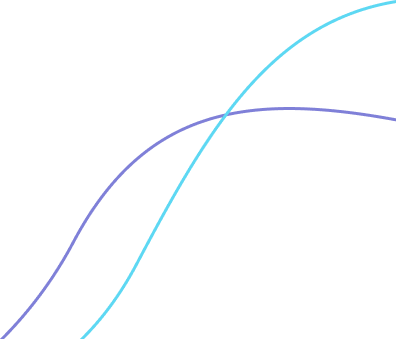
Choosing the right tech stack is one of the most critical decisions when developing a mobile app. It impacts the development process and the app's performance, scalability, and long-term maintainability. With many languages, frameworks, and tools available, selecting the best tech stack can be overwhelming. Monedata shares some strategies below…
What’s a tech stack?
Before we deep dive, a quick explainer: a tech stack comprises the set of technologies used to build a software application. For mobile apps, it typically includes:
- Frontend Tech: These are used to create the app's user interface and experience. For native apps, this would be languages like Swift for iOS and Kotlin for Android. For cross-platform apps, it could be frameworks like React Native or Flutter.
- Backend Tech: The backend handles server-side logic, databases, authentication, and data processing. Common languages include Node.js, Python, and Ruby.
- Database: The database stores and retrieves app data. Choices range from SQL-based databases like MySQL and PostgreSQL to NoSQL ones like MongoDB.
- DevOps: This includes tools and practices for continuous integration, delivery, and deployment, as well as monitoring and scaling infrastructure.
Define your needs
First up, you need to decide what type of app you want to build. Native apps, for example, are built specifically for iOS or Android using their respective languages and tools (Swift/Objective-C for iOS, Kotlin/Java for Android). They offer the best performance and access to platform-specific features. Cross-platform apps, on the other hand, are built using frameworks like Flutter or React Native; these apps work on both iOS and Android with a single codebase, reducing development time and cost. Web apps are mobile-optimised websites that run on any device with a browser. They are the easiest and quickest to build but offer limited functionality compared to native and cross-platform apps.
List the core features your app will need, such as offline functionality, real-time updates, or access to device hardware like cameras or GPS. Certain tech stacks are better suited for specific functionalities. For instance, native apps are better for hardware-intensive features. Consider the expected user base and the amount of data your app will process.
Choose a front-end stack
For Android, Kotlin is the preferred language for Android development, offering better syntax and safety features compared to Java, the older option. Opt for native development if you need high performance, access to the latest platform features, or a highly polished user experience tailored to each platform.
- React Native: Developed by Facebook, React Native allows you to build apps using JavaScript and React. It provides near-native performance and a rich set of libraries.
- Flutter: A UI toolkit from Google, Flutter uses Dart as its programming language. It offers a comprehensive set of pre-built widgets and is known for its fast development cycle.
- Xamarin: Owned by Microsoft, Xamarin allows you to build apps using C#. It integrates well with the .NET ecosystem and is suitable for enterprise apps.
Choose cross-platform if you have limited resources and need to launch on both iOS and Android simultaneously. It’s also ideal for apps with simpler UIs and functionalities.
Progressive Web Apps are built using standard web technologies like HTML, CSS, and JavaScript but offer app-like experiences. They are easy to deploy and update but are limited in functionality compared to native apps. Choose PWAs if you need a lightweight app that works on all devices and don’t require complex native features.
Choose a back-end stack
A JavaScript runtime, Node.js is known for its non-blocking, event-driven architecture. It’s suitable for real-time applications like chat apps or collaboration tools. Python, on the other hand, is a versatile language, and Django or Flask frameworks are excellent for building secure and scalable backends. It’s particularly good for data-intensive apps. Known for its rapid development capabilities, Ruby on Rails is a popular startup choice. It’s great for building MVPs (Minimum Viable Products) quickly.
You can choose databases from Relational Databases such as MySQL, PostgreSQL, and SQLite, which are well-suited for apps requiring complex queries and transactions. NoSQL Databases such as MongoDB and Firebase Realtime Database are popular for apps needing flexible schemas, such as networks or content management systems. Consider using cloud services like AWS, Google Cloud, or Firebase for hosting, data storage, and serverless functions. These services can reduce development time and infrastructure management.
DevOps
Use CI/CD tools like Jenkins, GitLab CI, or GitHub Actions to automate the build, testing, and deployment processes. This ensures a smooth release cycle and quick feedback loops. Choose cloud providers that offer auto-scaling and load balancing to handle varying traffic loads. Tools like Kubernetes or Docker can help manage containerised applications for better scalability and resource utilisation. Implement monitoring tools like New Relic, Datadog, or Firebase Crashlytics to track app performance and errors. Regularly update dependencies and frameworks to maintain security and performance.
Other considerations
Choosing a tech stack that your team is familiar with can significantly reduce development time and costs. While exploring new technologies is beneficial, opting for a stack that your team is comfortable with ensures a smoother development process and better code quality.
Your budget and timeline will also influence your tech stack choice. Native development is generally more expensive and time-consuming due to the need for separate codebases for iOS and Android. Cross-platform development, on the other hand, can be cost-effective but may require trade-offs in terms of performance and access to native features.
Consider the long-term maintenance of your app. A well-established tech stack with a large community and regular updates will ensure your app can be maintained and improved over time. For example, React Native and Flutter have vibrant communities and are backed by major companies (Facebook and Google), making them safe long-term choices.
Conclusion
Choosing the right tech stack for your mobile app is a nuanced decision that depends on various factors such as app type, feature set, performance requirements, and team expertise. By carefully considering each of these factors, you can select a tech stack that not only meets your current needs but also sets your app up for future success. Check back to the Monedata blog soon for more tips, tricks, and strategies from the team.





Comments